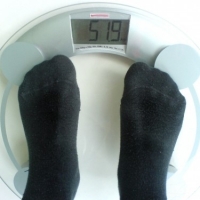Lose Weight > Weight Loss Tips > Weight Loss Articles > What You Need To Know Before Going On A Glycemic Index Diet Plan
What You Need To Know Before Going On A Glycemic Index Diet Plan
An interesting point about glycemic index diet plans is that, so long as you abide to simple guidelines on portion control, you do not have to count calories or stop eating when you reach a certain number of points. I have found that calorie counting, while very effective, can be counter-productive; glycemic index diet plans address this well.
Let me ask you, have you tried counting calories while eating out at a restaurant? Not only is it very unsociable and a pain in the butt, it's simply not feasible to do this for the rest of your life. What makes glycemic index diet plans good is that they are based on lifestyle changes, and are realistic too. Compared to a restrictive fad diet that involves counting calories or how many grams of fat or carbohydrates you're consuming, glycemic index diet plans are much easier to implement.
Another advantage of glycemic index diet plans is that they do not involve unhealthy and potentially dangerous phases unlike diets such as the Atkins Diet, the South Beach Diet and the Fat Flush Plan. Such phases recommend you drastically lower your calories and/or your intake of carbohydrates which can dehydrate you and result in loss of muscle tissue which will slow down your metabolism and make it easier for you to re-gain the weight when you go back to eating normally.
Despite the good points, glycemic index diet plans do have their drawbacks unfortunately. For example, following the glycemic index is not as simple as it appears. For starters, the GI value of many foods is unknown, and so you are limited to foods which are on the list when following a glycemic index diet plan. Also, many factors affect the GI value, such as how the food is cooked and what is eaten with it.
In fact, this is the biggest drawback of the glycemic index diet plans. Since most meals are made up of a combination of foods, not single foods, it is difficult to identify the GI value of a meal. White potatoes, for example, have a high GI, but if the meal also includes a grilled chicken breast and steamed green vegetables, this will slow down the digestion of the potatoes and lower the GI value. Glycemic index diet plans that rely exclusively on eating low GI foods often ignore this.
What's more, since fat slows down digestion, foods such as chocolate, potato chips and sausages have a low GI value, yet it doesn't take a rocket scientist to know that such foods are very unhealthy and eating too many fatty foods can lead to heart diseases and obesity. You can actually have a diet high in fat and low in healthy nutrients and still be following a glycemic index diet plan!
What it comes down to at the end of the day is not the GI value of certain foods, but using common sense. The GI value of a potato is much higher than that of a chocolate bar, however, the former is clearly the more healthy option. Fortunately, many glycemic index diet plans make this point clear.
Rather than follow a glycemic index diet plan and restricting yourself to low GI foods, the approach I teach is to focus on eating healthy and natural foods, be them low or high on the glycemic index, alongside quality sources of protein and healthy fats such as extra virgin olive oil. Glycemic index diet plans have a lot of good in them, but they do have flaws.
Related Articles
-
An Overall View of Raspberry Ketones
The latest research has discovered that the ketone enzyme that is f
-
Yoghurt drinks and weight loss
There has been an interesting shift in newspaper journalism. In the go
-
Weight Loss from Exercise
Weight loss from exercise can be achieved by walking
-
Steady State Cardio 5 X More Effective Than HIIT????
High Intensity Interval Training, or HIIT for short, has been promoted
-
Effective and Proven Ways to Lose Pectoral Fat Fast
Pectorals are the muscles located in our chest. In males they make
-
Weight Loss Plateaus -- 7 Easy Steps to Overcome It
Have you ever experienced this scenario before?I hav
- DON'T MISS
- Spark Of Life
- Healthy Low Fat Smoothie and Breakfast Smoothies as a best Diet Plan
- Doubts About Gastric Bypass? One Womans Final Effort to Lose Weight Without Surgery
- Capsiplex supplements-How does capsiplex compare to other diet tablets
- The Diet Solution Free Ebook-The Diet Solution Program
- Buy a Cheap Fast Weight Loss Diet Plan that Works!
- Perception And Weight
- 20 Dieting Tips You Can Use Immediately To Start Losing Weight
- Top Ten Foods to Lose Weight in a Healthy Manner
- Ayurvedic Pills To Eradicate Excess Weight That Are Safe




